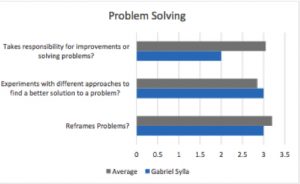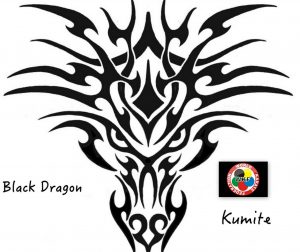
In my last blog about the subject i put up the picture above, showing where i stood in this NCCP competency compared to my peers at the beginning of our program and the area where i was the most behind the class average was : “takes responsibility for improvements or problem solving.”
I took it upon myself to improve in this area to become a better coach, during my studies at UBC i came to realize that in my coaching career i was always behind someone who took all the big responsabilities and a person who had all the pressure. I was always the”assistant” , always in a supporting role! I was hesitant to put up my own ideas upfront for improving the athletes.
Early in my career my assumption was: the head coach makes all the final decisions, that is his role, he should know all the answers, he should delegate tasks and break things down, not delegate responsibilities or keep us (assistants) accountable.
“Leaders venture out none of the individuals in our study sat idly by waiting for faith to smile upon them”
“Those who led others to greatness seek and accept challenges”
When i graduated from the Canadian Sport Institute in Montreal, i started to have a different mindset, and started to evolve as a coach and a leader. The UBC program inspired me to take on more responsibilities to improve athletes, i decided 6 months ago to step outside my comfort zone and open my own dojo to create a competition team. I could not hide behind anybody, this was my project.

Since we became an Olympic sport more and more traditional karate athletes are making the transition to “sport karate”, once i declared that i wanted to start my own competition team, the word got around and i started to have athletes wanting to make the transition come to me. I did not solicitate anyone because that causes problems with other teachers and coaches. Most of them keep a traditional base with their original “dojos” and come to me for sport karate.
I immediately started a problem solving culture and a continuous improvement culture, getting athletes, to think for themselves. In my problem solving quest in training, i started to explore more deliberate practice and I also made them understand that fighting is a constant problem solving game and that led me to add cognitive dimension to my coaching. Instead of telling them what to do all the time, i put them in situations that make them understand The “why” and let them figure out the “how” and i wanted to have them concentrate more in practice. I started to design challenging practices to improve performance.
Despite repetition, most people fail to become experts at what they do. It doesn’t matter how many years they spend they stop getting better. Experience does not equate to expertise.( Atul Gawande 2002)
i had an athlete who had trouble creating openings to score, so i filmed him and reviewed the film with him and asked him why he had trouble scoring. He figured out by himself that he wasn’t creating any deterrences or faints, he was coming in too directly and his intentions were too obvious to his opponent. He had a big smile on his face, and the next practice i told him to choose 3 different attack technics and he had to find tree different ways to score for each attacks. It took a while but he found by himself 9 effective strategies. The next steps was, the testing, so i had him spare in practice without telling his teammate what i was looking for, and he passed the test.
By viewing expert per- formers not simply as domain-specific experts but as experts in maintaining high levels of practice and improving perfor- mance, we are likely to uncover valuable information about the optimal conditions for learning and education. (K. Anders Ericsson 1993)
A few weeks later we had a minor competition, a perfect setting to put him to the test, and he finished 2 nd and scored a lot of points in his matches. I learned a lot as a coach in this experience and improved his offensive repertoire dramatically!
References
K. Anders Ericsson, Ralf Th. Krampe, and Clemens Tesch-Romer (1993) The Role of Deliberate Practice in the Acquisition of Expert Performance
JM. Kouze and BS.Posner (2006) leadership challenge
Farnam Street News letter Susan Cain (2002)What is Deliberate Practice?

